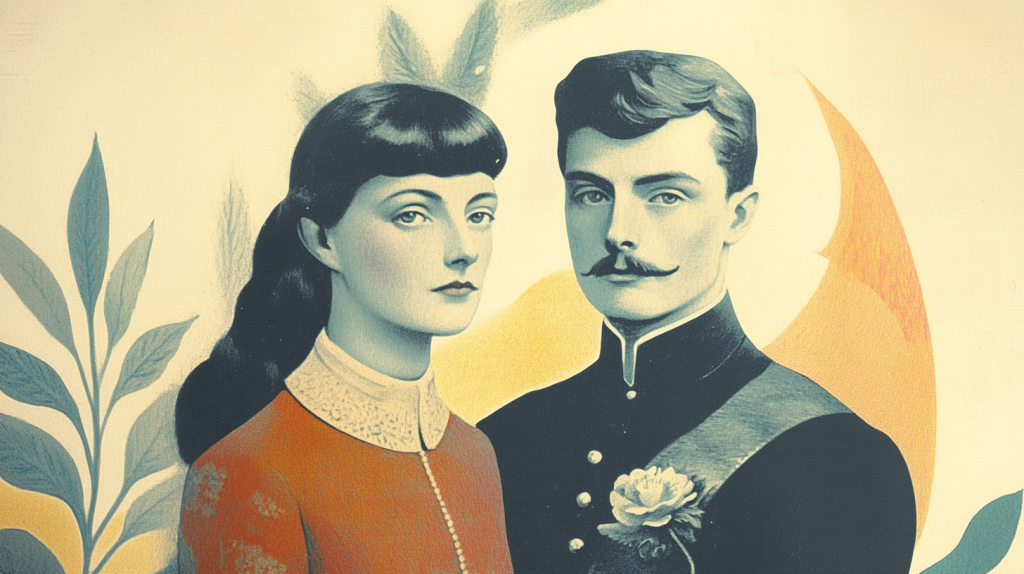In the dawning days of 1889, as Herman Hollerith’s electric tabulating machine laid the foundation for the information age (January 8), a curious medicinal tonic in Atlanta found its first corporate identity, Coca-Cola, setting the stage for a global refreshment empire (January 15), while the birth of Columbia Phonograph in Washington, D.C. (January 22) ensured that the voices of the age would not merely echo but endure. And then, on January 30th…

Rudolf, Crown Prince of Austria and his mistress Baroness Mary Vetsera commit a double suicide (or a murder-suicide) in the Mayerling hunting lodge
It happened on January 30, 1889
Featuring: Baroness Mary Vetsera, Rudolf, Crown Prince of Austria.

Born on August 21, 1858 (1858 - 1889) Rudolf, Crown Prince of AustriaOnly son and third child of Emperor Franz Joseph I of Austria and Duchess Elisabeth in Bavaria |

Born on March 19, 1871 (1871 - 1889) Baroness Mary VetseraAustrian noblewoman and the mistress of Rudolf, Crown Prince of Austria |
In July 1889, as The Wall Street Journal (July 8) began chronicling the pulse of American finance, revolution stirred in Paris with the opening of the International Workers Congress, giving rise to the Second International (July 14). Meanwhile, across the Atlantic, the tides of history nearly turned in Rio de Janeiro, where Emperor Pedro II defied fate and survived an assassination attempt (July 15), his reign momentarily shaken but not undone. A few days later…

Sixten Sparre murders Elvira Madigan and commits suicide.
It happened on July 19, 1889
Featuring: Sixten Sparre, Elvira Madigan.
In this moment in time, we are supposed to look at the past with New Eyes and see the shenanigans of Death Takes a Holiday the legendary death squad that killed… nobody!

Born on September 27, 1854 (1854 - 1889) Sixten SparreSwedish nobleman, lieutenant, cavalry officer, journalist, poet, mostly known for the murder of circus performer Elvira Madigan in a murder-suicide |

Born on December 04, 1867 (1867 - 1889) Elvira MadiganCircus performer, best known today for her romantic relationship with the Swedish nobleman and cavalry officer Sixten Sparre |

It’s Obviously The Same Woman

Born on December 04, 1867 (1867 - 1889) Elvira MadiganCircus performer, best known today for her romantic relationship with the Swedish nobleman and cavalry officer Sixten Sparre |

Born on March 19, 1871 (1871 - 1889) Baroness Mary VetseraAustrian noblewoman and the mistress of Rudolf, Crown Prince of Austria |
It’s Obviously The Same Man

Born on September 27, 1854 (1854 - 1889) Sixten SparreSwedish nobleman, lieutenant, cavalry officer, journalist, poet, mostly known for the murder of circus performer Elvira Madigan in a murder-suicide |

Born on August 21, 1858 (1858 - 1889) Rudolf, Crown Prince of AustriaOnly son and third child of Emperor Franz Joseph I of Austria and Duchess Elisabeth in Bavaria |
Since nobody is dead, we must ask: What was Mary/Elvira doing after 1898? In 1898, Rosa Luxemburg moved to Germany, and soon became a leading figure in the Social Democratic Party of Germany (SPD). Her political activities included teaching Marxist economics at the party’s training school.


The women who coordinated the deployment of characters to move along a storyline, in the 19th and 20th century try to make it as easy as possible for us to detect their entire career across all of their roles. If you’re going to follow a death squad across history., it’s better to follow the one that kills nobody!